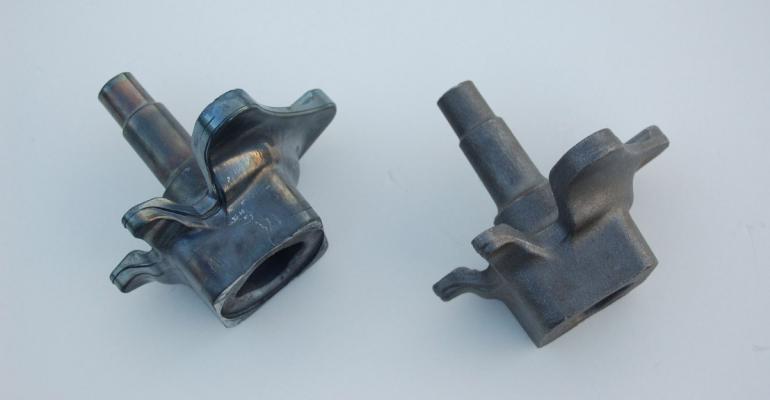BRUSSELS – Spanish researchers are exploring ways to join dissimilar metals for use in the automotive industry to increase the proportion of lighter-weight parts.
The Co-operative Research Centre into High-performance Manufacturing Research (CIC marGUNE), based in Eibar in the Basque country, is coordinating a group of Spain-based studies whose aim is fusing different metals for auto production.
CIC marGUNE, in conjunction with nearby Mondragon University, will study thixoforming and other means of connecting parts. Related studies include co-casting, friction and laser-welding technologies by the Spain-based IK4 Research Alliance, and further investigation into friction welding by Tecnalia, a research group located in Gipuzkoa, also in the Basque country.
CIC marGUNE’s work involves researching ways to increase the number of interfaces between steel and aluminum, increasing the proportion of the latter. It is focused on the use of co-casting, friction, laser and advanced arc welding, joining by means of adhesives and thixoforming (joining metals in a semi-solid state).
“Thixoforming technology means we have been able to produce an acceptable joining of parts with a certain geometrical complexity and, as a result, we have managed to considerably reduce the weight of an actual part by about 40%,” says Erik Echaniz, a CIC marGUNE researcher and a member of the Advanced Material Forming Processes group at Mondragon’s engineering faculty.
A key focus of this work is developing composite metal joints for chassis, axles and steel welded joints.
“The main goal is to demonstrate the feasibility of such hybrid structures, comparing their mechanical properties with other conventional solutions,” Echaniz tells WardsAuto. “Each element has to be suitable to be manufactured with the selected joining technology. Due to its potential for weight reduction, the front and rear axle were chosen.”
Echaniz has been developing a steel-aluminum left front cradle mount middle using semisolid forming technology, while other researchers are investigating co-casting for the right front cradle mount middle, and friction and laser welding for larger metal sheets.
Car bodies offer major potential for lightweight construction methods, since they comprise nearly 40% of a car’s total weight, he notes. Traditional methods such as fusion welding and solid-state joining do not successfully combine dissimilar materials, “hence, the need for advanced welding technologies,” Echaniz says.
In Europe, the use of aluminum and other light composite materials in vehicle framework and chassis almost doubled between 2000 and 2010, and is expected to account for 70% of these components by 2020, according to a European Commission report.
“It is estimated that every kilogram (2.2 lbs.) of weight reduced in a vehicle means about 20 kg (44 lbs.) of carbon-dioxide reduction and fuel usage improves by 6% to 7% per 10% vehicle weight reduction,” Echaniz adds.
“Lightweighting is not only popular because of its positive impact on fuel economy, but also because it increases (a) product’s performance where mass is critical, such as the unsprung weight not supported by suspension,” he says. “A reduction in mass within the unsprung weight can significantly improve the noise, vibration and handling characteristics of the vehicle.”
Echaniz says automakers should be able to adopt the new processes without significant difficulty: “The materials used are the same as currently used by companies in their production lines. In addition, for some joining technologies we are producing batches of prototypes at pilot plant level, therefore the adaptation required is minimal.”
The project is supported by public funding by the Basque regional government; contributions from the automotive sector, including CIE Automotive, a Basque country industrial group that manages high value-added processes, as well as Italy’s Alfa Romeo; and aeronautic manufacturers.
Each member of the research consortium will own the intellectual property rights to the technologies they develop. Echaniz declines to reveal the budget for the project or explain how the researchers’ findings will be distributed.
“The project is quite mature but we are still at the optimization stage of the prototypes,” he says. Some tests have been carried out to validate the mechanical properties of components and hybrid joints.
“The results are promising,” Echaniz says.





